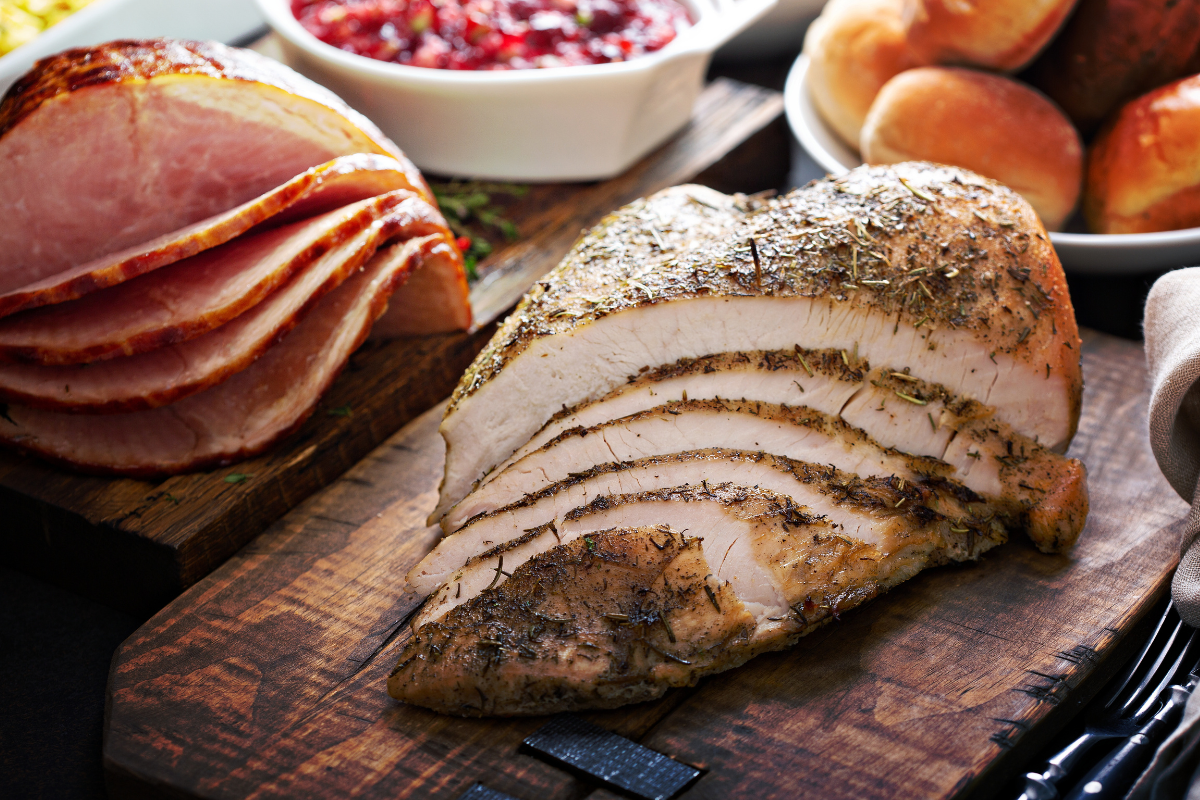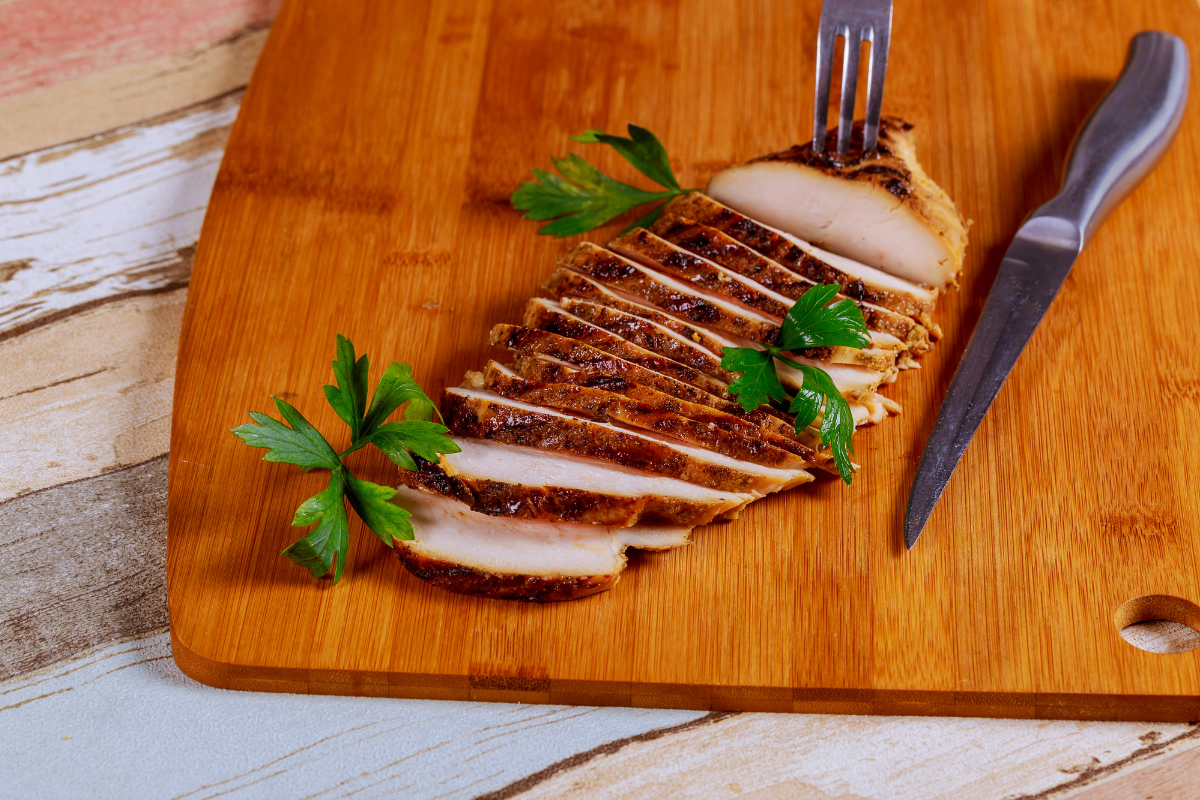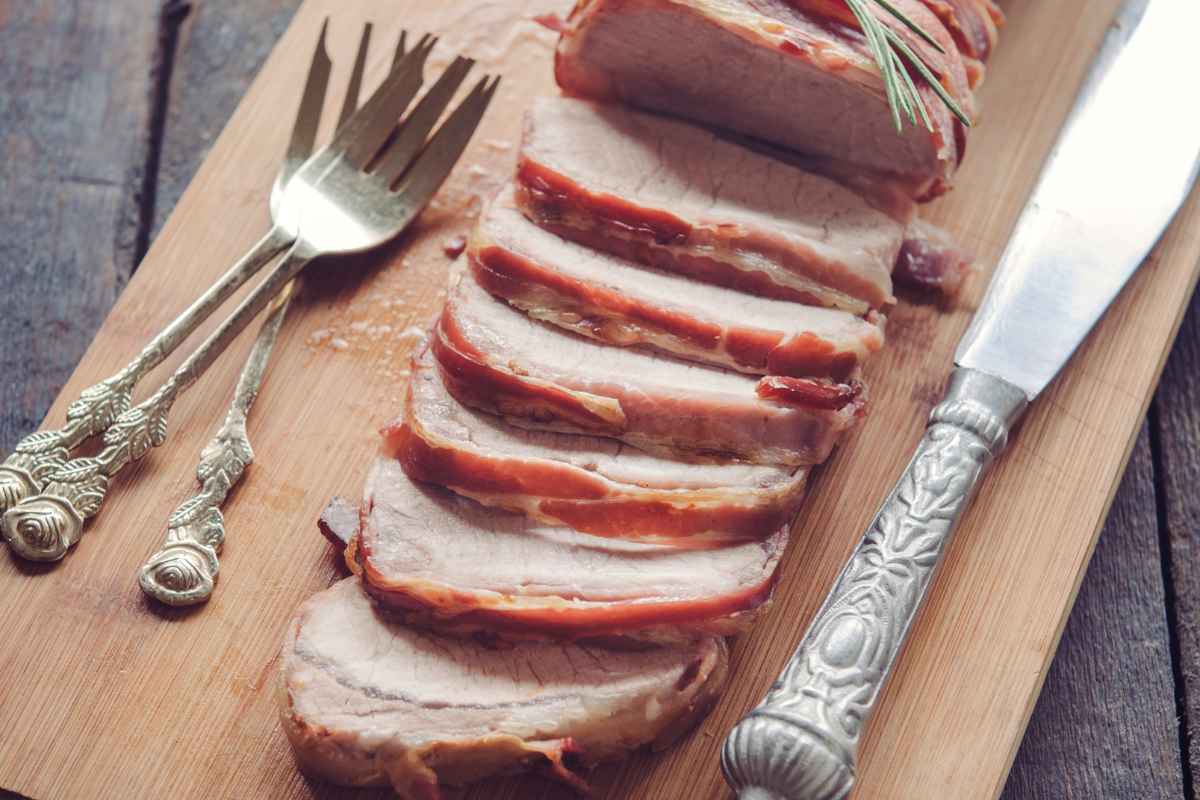Introduction to Thin-Sliced Chicken Breast Recipes
The Benefits of Using Thin-Sliced Chicken Breast in Cooking
Thin-sliced chicken breast is a culinary favorite for many reasons, chief among them being its quick cooking time. Thinner cuts mean faster, more even cooking, reducing the chances of a dry or overcooked meal. This attribute is particularly beneficial for busy weeknights or meal-prep scenarios where time is of the essence. Moreover, thin-sliced chicken breast serves as an excellent protein source, packing a nutritious punch with fewer calories and lower fat content compared to other cuts. Its lean nature supports various dietary goals, from weight management to muscle building. Additionally, the thinner slice allows for more surface area, meaning more room for delicious marinades and seasonings to enhance the chicken’s flavor.
Overview of the Versatility in Recipes
The versatility of thin-sliced chicken breast in culinary applications is vast. It can be incorporated into a plethora of dishes, transcending cuisines and cooking styles. Whether you’re aiming for a light, summery salad, a hearty pasta dish, or a savory stir-fry, thin-sliced chicken breast can adapt to fit the theme. Its mild flavor makes it a perfect canvas for a range of seasonings and sauces, from classic Italian herbs to bold Asian spices. This adaptability not only caters to diverse palates but also encourages culinary creativity, inviting cooks to experiment with flavors and ingredients. In essence, thin-sliced chicken breast is not just a meal component; it’s a gateway to global cuisine exploration and a testament to the creative potential in everyday cooking.
Preparing Your Chicken
How to Properly Slice Chicken Breast Thinly
Achieving the perfect thin slice of chicken breast requires a blend of technique and the right tools. Start with a sharp chef’s knife and a stable cutting board to ensure safety and precision. If the chicken breast is particularly thick, you might find it easier to slice horizontally, creating two thinner pieces from one. To do this, place your hand flat on top of the breast and carefully slice through the middle, being cautious to keep the knife parallel to the cutting board. For an even thinner cut, you can gently pound the sliced chicken breasts between two sheets of plastic wrap using a meat mallet or rolling pin. This not only evens out the thickness but also tenderizes the meat, ensuring a uniform cooking process and optimal texture.
Marinating Tips for Enhancing Flavor
Marinating thin-sliced chicken breast is an excellent way to infuse it with flavor and moisture. Since the chicken is thin, it doesn’t need to marinate for long—a maximum of two hours is often sufficient, and even 30 minutes can be effective if you’re short on time. Acidic components like lemon juice or vinegar can help tenderize the meat, while oils add moisture and help distribute the flavors of herbs and spices. Always marinate in the refrigerator to keep the chicken safe from bacterial growth. For a balanced flavor profile, combine elements of fat, acid, salt, and your choice of seasonings. Experiment with different marinades to discover your favorite combinations, whether you’re craving the zestiness of citrus, the richness of garlic and herbs, or the savory depth of soy sauce and ginger.

Oven-Baked Thin Sliced Chicken Breast Recipes
Detailed Recipe for Oven-Baked Thin-Sliced Chicken Breast
Ingredients:
- 4 thin-sliced chicken breasts
- 2 tablespoons olive oil
- 1 teaspoon garlic powder
- 1 teaspoon paprika
- Salt and pepper to taste
- 1 lemon, sliced
- Fresh herbs (like thyme or rosemary)
Instructions:
- Preheat and Prepare: Preheat your oven to 375°F (190°C). Line a baking sheet with parchment paper or lightly grease it.
- Season the Chicken: In a small bowl, mix olive oil, garlic powder, paprika, salt, and pepper. Brush both sides of each chicken breast with the oil mixture, ensuring they are well-coated.
- Arrange for Baking: Place the chicken breasts on the prepared baking sheet. Top each piece with a slice of lemon and a sprig of your chosen herb.
- Bake: Transfer the baking sheet to the oven and bake for 15-20 minutes, or until the chicken is fully cooked (internal temperature should reach 165°F or 74°C). The exact time will depend on the thickness of the chicken.
- Rest and Serve: Let the chicken rest for a few minutes after removing it from the oven. This allows the juices to be redistributed, ensuring the meat is moist and flavorful. Serve hot, garnished with additional fresh herbs or a squeeze of lemon juice if desired.
Variations and Flavor Options
The beauty of oven-baked thin-sliced chicken breast lies in its versatility. Here are some variations to spice up the basic recipe:
- Italian Herb Chicken: Mix dried Italian herbs like oregano, basil, and thyme with garlic powder and olive oil. Brush onto the chicken before baking and top with a sprinkle of grated Parmesan in the last few minutes of cooking.
- Spicy Chipotle Chicken: Create a marinade with pureed chipotle peppers in adobo sauce, lime juice, garlic, and olive oil. Coat the chicken and let it marinate for an hour before baking.
- Honey Mustard Chicken: Combine Dijon mustard, honey, a touch of apple cider vinegar, and olive oil to create a sweet and tangy sauce. Brush this over the chicken before baking for a delightful glaze.
- Lemon Garlic Chicken: Amp up the lemon flavor by adding extra lemon zest to the seasoning mix, along with minced garlic, parsley, and olive oil.
These variations can transform your oven-baked chicken into a range of flavorful dishes, ensuring you never tire of this simple yet delicious meal.
Stovetop Thin Sliced Chicken Breast Recipes
Cooking Techniques for Stovetop Preparation
When cooking thin-sliced chicken breast on the stovetop, achieving a golden, flavorful sear without overcooking is key. Start by patting the chicken dry to ensure a nice browning effect. Heat a skillet over medium to medium-high heat and add a thin layer of oil with a high smoke point, such as canola or grapeseed oil. Once the oil shimmers, carefully place the chicken in the pan without overcrowding to ensure each piece cooks evenly and gets a good sear.
Cook the chicken for about 2-4 minutes on each side, depending on thickness. The chicken should release easily from the pan when it’s ready to flip. Avoid moving the chicken around as it cooks to allow a golden crust to form. To check for doneness, ensure there’s no pink in the middle, or use a meat thermometer to confirm it’s reached 165°F (74°C).
Quick and Easy Stovetop Recipes
Lemon Herb Chicken:
- Season the chicken with salt, pepper, lemon zest, and a mix of dried herbs like oregano and thyme.
- Cook in olive oil and finish with a squeeze of fresh lemon juice and a sprinkle of fresh parsley.
Spicy Cajun Chicken:
- Coat the chicken in a blend of Cajun seasonings before searing.
- Cook until golden and serve with a side of sautéed bell peppers and onions for a quick, flavorful meal.
Garlic Mushroom Chicken:
- After searing the chicken, sauté sliced mushrooms in the same pan.
- Add minced garlic and a splash of chicken broth or white wine to deglaze the pan, creating a simple sauce to spoon over the chicken.
Tomato Basil Chicken:
- Sear the chicken, then add cherry tomatoes to the pan until they start to burst.
- Finish with fresh basil and a drizzle of balsamic reduction for a dish that’s bursting with flavor.
These stovetop recipes provide a variety of flavors you can achieve with minimal cooking time, making them perfect for quick weeknight dinners.

Healthy and Nutritious Options
Low-Carb and Keto-Friendly Thin-Sliced Chicken Breast Recipes
Thin-sliced chicken breast is an excellent choice for those following a low-carb or keto diet due to its high protein content and low fat. To make a keto-friendly dish, focus on incorporating healthy fats and low-carb vegetables while avoiding sugary sauces or breading.
Keto Pesto Chicken:
- Coat thin-sliced chicken breasts with homemade or store-bought pesto (ensure it’s low in carbs).
- Sear the chicken in a skillet and serve with a side of sautéed spinach or zucchini noodles for a fulfilling, low-carb meal.
Bacon-Wrapped Chicken:
- Wrap each thin-sliced chicken breast with a slice of bacon, securing it with a toothpick.
- Cook in a skillet until the bacon is crispy and the chicken is cooked through. The bacon not only adds flavor but also healthy fats that are key to a keto diet.
Gluten-Free Recipe Options and Tips
For a gluten-free diet, it’s crucial to avoid cross-contamination and use gluten-free alternatives for any coatings or thickeners.
Gluten-Free Chicken Parmesan:
- Use almond flour or crushed gluten-free crackers mixed with Parmesan cheese for the breading.
- Dip the chicken in beaten eggs, then coat with the almond flour mixture, and pan-fry until golden.
- Top with a spoonful of gluten-free marinara sauce and a slice of mozzarella, then broil until the cheese melts.
Lemon Almond Chicken:
- Create a mixture of ground almonds, lemon zest, and herbs for the coating.
- Dredge the chicken in beaten eggs, then in the almond mixture, and sauté until fully cooked.
- Serve with a lemon wedge for an extra burst of flavor.
These recipes demonstrate that dietary restrictions don’t have to limit flavor or variety. With the right ingredients and cooking techniques, you can enjoy delicious, healthy meals that align with your nutritional goals.
FAQs
Addressing Common Questions About Cooking Thin-Sliced Chicken Breast
How Do You Keep Thin Chicken Breast Moist? To keep thin chicken breast moist, avoid overcooking it. Cook the chicken on medium heat and check for doneness after a few minutes per side. Using a marinade or brine before cooking can also help retain moisture. Additionally, letting the chicken rest for a few minutes after cooking allows the juices to redistribute, enhancing the meat’s tenderness and juiciness.
How Do You Not Overcook a Thin Chicken Breast? Monitor the cooking time closely, as thin chicken breasts cook quickly. Use a meat thermometer to check that the internal temperature has reached 165°F (74°C) without exceeding it. Cooking on medium heat allows the chicken to cook through evenly without burning the exterior.
What is Thin Cut Chicken Breast Called? Thin-cut chicken breast is often referred to as “chicken cutlets” or “thin-sliced chicken breast.” These cuts are ideal for quick cooking and are popular in recipes that require even, fast cooking.
Is it Better to Bake Chicken at 350 or 400? Baking thin chicken breast at 350°F (177°C) is generally better as it allows the meat to cook through evenly without drying out. However, if you’re short on time and prefer a slightly crispier exterior, baking at 400°F (204°C) can be effective, just be sure to reduce the cooking time to prevent overcooking.
Tips for Storage and Reheating
Storage: Store cooked thin-sliced chicken breast in an airtight container in the refrigerator for up to three days. To extend its shelf life, you can freeze the cooked chicken for up to three months. Ensure it’s cooled down before storing and label the container with the storage date.
Reheating: When reheating, do so gently to prevent the chicken from drying out. Using a microwave with a cover or reheating in a skillet over low heat with a splash of broth or water can help maintain moisture. If using an oven, cover the chicken with foil and reheat at a low temperature, around 275°F (135°C), until just warmed through.

Conclusion
In conclusion, mastering the art of cooking with thin-sliced chicken breast can elevate your culinary skills and expand your weeknight dinner repertoire. These cuts not only cook quickly but also offer a canvas for a myriad of flavors and cooking techniques, from stovetop sautés to oven-baked delights. By understanding the nuances of preparing, seasoning, and cooking thin-sliced chicken breast, you can ensure moist, flavorful results every time.
Embracing the variety of recipes available, from the classic oven-baked dishes to inventive stovetop creations, allows you to explore global cuisines and cater to any dietary preference, be it low-carb, keto, or gluten-free. The key to success lies in not overcooking the meat, using proper marination techniques, and understanding the best ways to pair and serve these dishes.
Moreover, addressing common questions and concerns about cooking and storing thin-sliced chicken breast ensures that your culinary creations remain delicious and safe to eat, even as leftovers. Whether you’re a seasoned chef or a home cook, the versatility and convenience of thin-sliced chicken breast make it a staple ingredient worth mastering. With these insights and tips, you’re well-equipped to create delectable, nutritious meals that will delight your family and guests.
